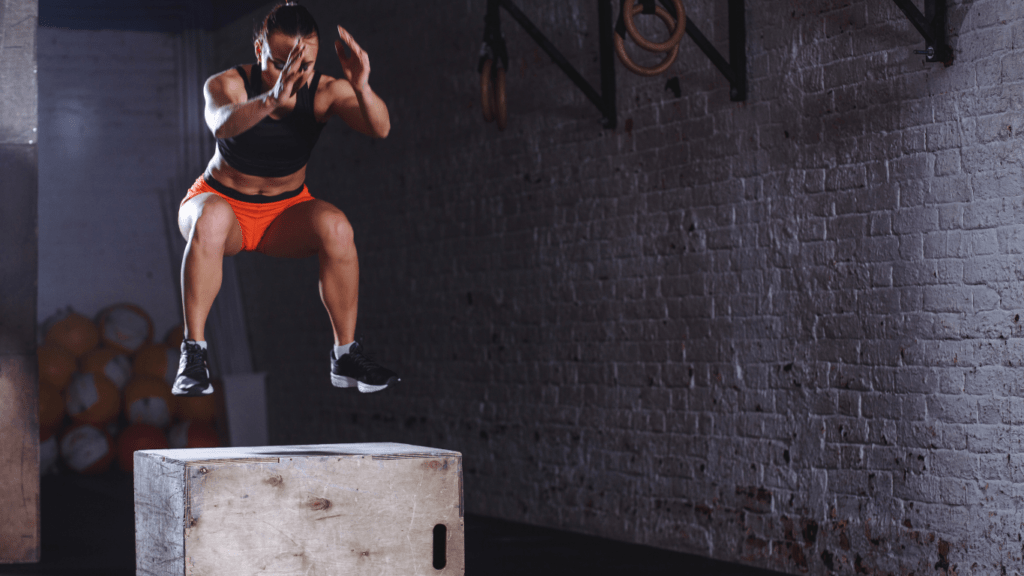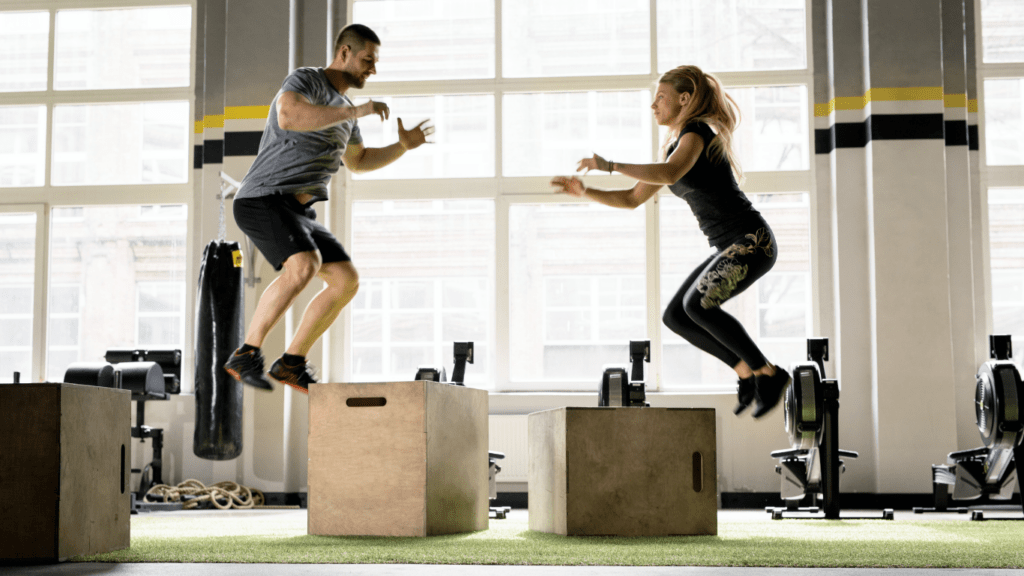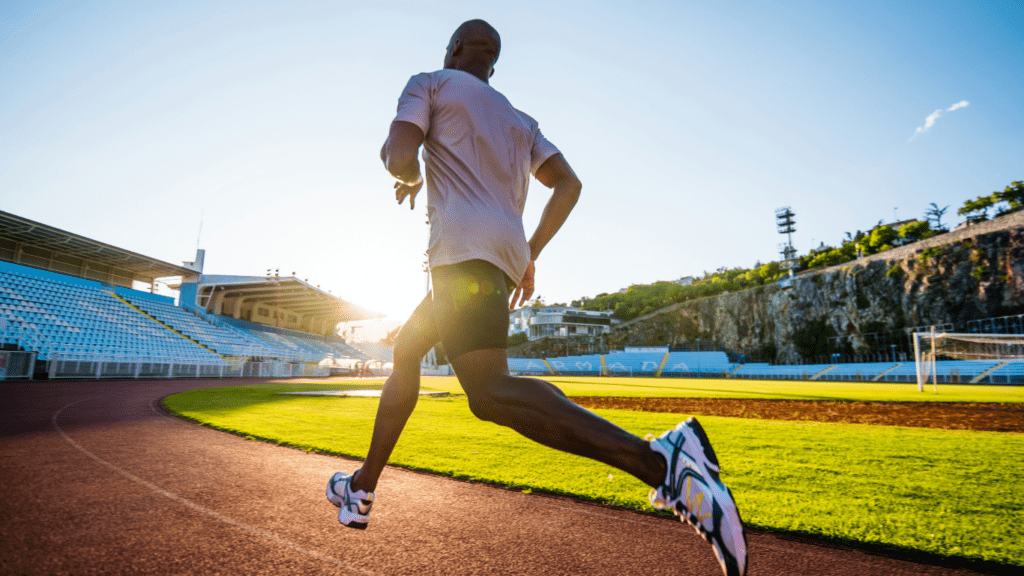When it comes to boosting athletic performance, few methods deliver results as effectively as plyometric training. These explosive exercises aren’t just about jumping higher or running faster—they’re about building power, speed, and agility in ways that traditional workouts can’t match. Whether you’re an athlete aiming to dominate your sport or just looking to push your fitness limits, plyometrics can take your training to the next level.
Understanding Plyometric Training
Plyometric training focuses on explosive, high-intensity movements designed to develop power and speed. It involves exercises that stretch and contract muscles rapidly, enhancing the ability to generate force in a short time. These movements utilize the stretch-shortening cycle, where muscles store and release energy through elastic recoil, improving performance in activities like sprinting, jumping, and throwing.
Key components of plyometric training include:
- jumps
- bounds
- reactive exercises
For example, depth jumps engage the lower body by combining eccentric (muscle lengthening) and concentric (muscle shortening) actions, while clap push-ups incorporate explosive upper-body strength. Proper execution of these exercises targets fast-twitch muscle fibers, which are essential for quick, forceful movements.
Progression is vital to maximize results. Beginners often start with lower-impact drills, such as jump squats and lateral bounds, to build foundational strength and coordination. Advanced athletes incorporate complex routines like hurdle hops or weighted plyometric exercises to further enhance explosiveness and athleticism.
Benefits Of Plyometric Training
Plyometric training delivers substantial advantages for athletic performance, power development, and overall physical resilience. Its dynamic approach targets key physiological capabilities.
Improved Athletic Performance
Plyometric exercises increase speed, agility, and coordination, contributing to superior sports performance. High-impact movements like broad jumps and sprint drills train the body to produce force rapidly, crucial for activities like basketball, soccer, and track events. By integrating these exercises, I amplify my reaction times and overall explosiveness.
Enhanced Muscle Power And Strength
- Plyometric training enhances muscle contraction efficiency through explosive techniques.
- Repetitive stretch-shortening cycle engagement, seen in movements such as box jumps and clap push-ups, develops fast-twitch fibers.
- These fibers are essential for generating high power output in weightlifting, jumping, or sprinting disciplines.
- I’ve noticed significant gains in my vertical jump and lifting strength when I incorporate structured plyometric routines.
Increased Injury Prevention
Engaging in plyometric training strengthens connective tissues and improves joint stability. Exercises like lateral bounds and depth jumps train muscles to absorb impact effectively, which minimizes the risk of strains and overuse injuries. Adding progressive drills ensures I build resilience without compromising safety, supporting long-term physical health.
Key Components Of Plyometric Exercises

Plyometric exercises rely on fundamental principles designed to maximize explosive power and efficiency. I focus on three main elements that form the foundation of effective and safe training.
Stretch-Shortening Cycle
The stretch-shortening cycle (SSC) drives the power behind plyometric movements. Muscles generate force through rapid stretching (eccentric phase) followed by an explosive contraction (concentric phase). For example, depth jumps utilize the SSC by engaging the quadriceps and calves during the landing phase before springing upward. Efficient use of the SSC improves athletic performance in activities requiring explosive strength, like sprinting or striking a ball.
Proper Form And Technique
Executing exercises with proper form reduces injury risks and ensures maximum results. For jumps, landing softly on the balls of the feet activates stabilizing muscles while reducing joint strain. In upper-body plyometrics, such as clap push-ups, maintaining a neutral spine aligns the body for optimal force transfer. Following controlled, intentional form allows muscles to absorb and release energy effectively.
Progression And Intensity
Gradual progression builds strength and prevents overtraining. Beginners start with low-impact drills like squat jumps or lateral bounds to develop foundational movement patterns. Advanced athletes scale intensity by increasing height, adding equipment like medicine balls, or incorporating complex plyometric sequences. Adjusting rest intervals and repetitions ensures the exercises match performance goals while promoting steady improvement.
Popular Plyometric Exercises
Plyometric exercises use powerful, explosive movements to boost performance and develop strength. Below are some effective options to include in a training routine.
Box Jumps
Box jumps improve lower body power by targeting the quadriceps, hamstrings, and calves. I jump onto a stable platform, like a plyometric box, with both feet and then step down to avoid overloading my joints. This exercise enhances vertical leap and coordination. Beginners can start with a 12-inch platform, while advanced trainers might use heights over 24 inches.
Plyometric Push-Ups
Plyometric push-ups build upper body explosiveness by engaging the chest, triceps, and shoulders. Starting in a push-up position, I lower my chest to the floor and explosively push off with enough force for my hands to leave the ground. Adding a clap mid-air increases the difficulty. These push-ups also enhance core stability.
Medicine Ball Throws
Medicine ball throws focus on power generation in the chest, shoulders, and core. I perform this standing with feet shoulder-width apart, holding a medicine ball at chest level. Throwing it forward with full force into a wall or on the ground activates fast-twitch fibers. Variations include overhead slams and rotational throws to target different muscle groups.
Lateral Bounds
Lateral bounds improve agility and lower body strength by mimicking side-to-side movements. I use one leg to push off laterally and land on the opposite leg with control, maintaining a steady balance. This exercise targets the glutes, quads, and stabilizing muscles, making it essential for sports like basketball or soccer that require quick directional changes.



 Founder & Head Performance Strategist
Founder & Head Performance Strategist
